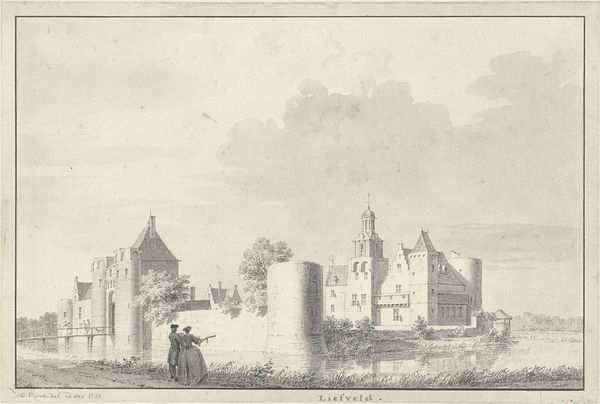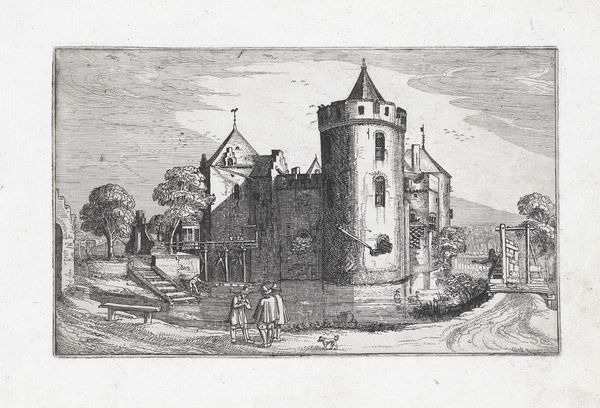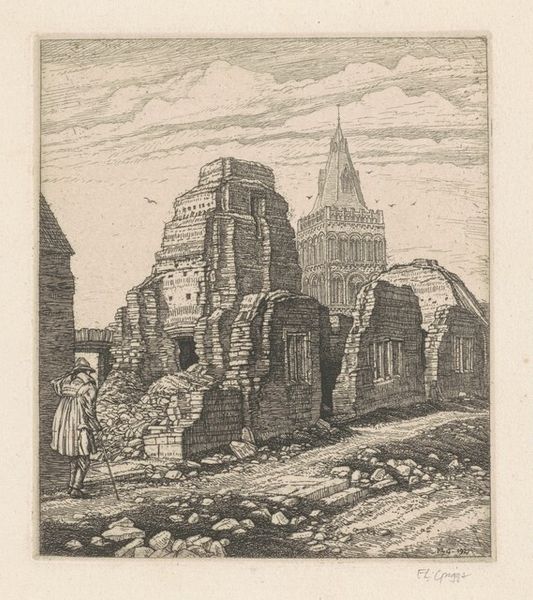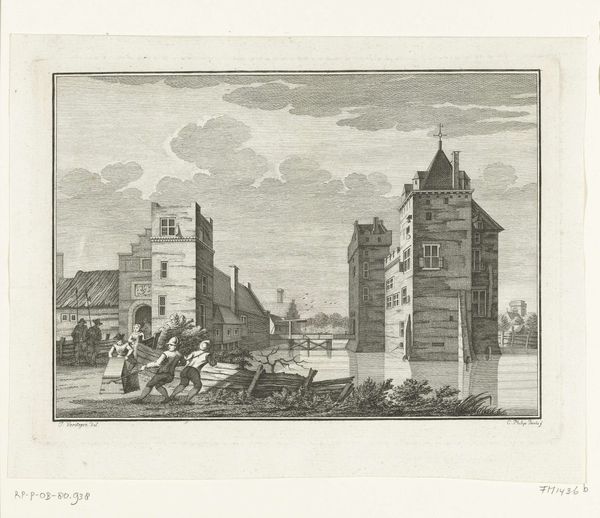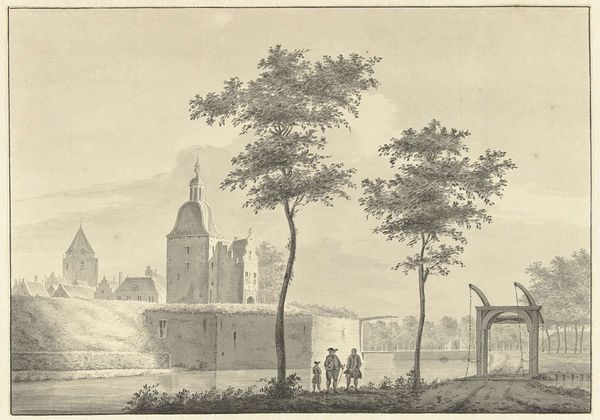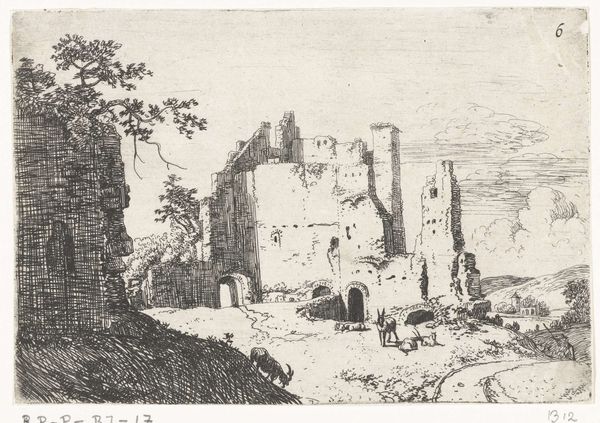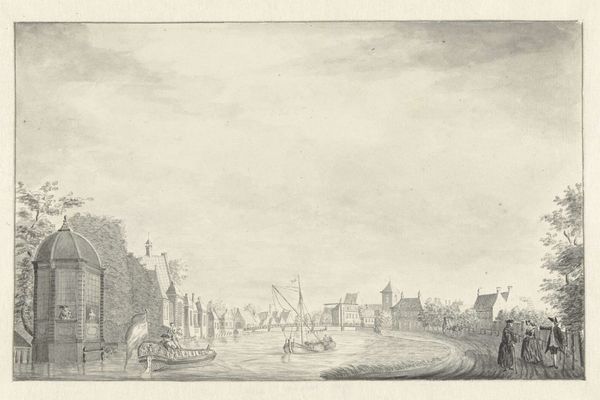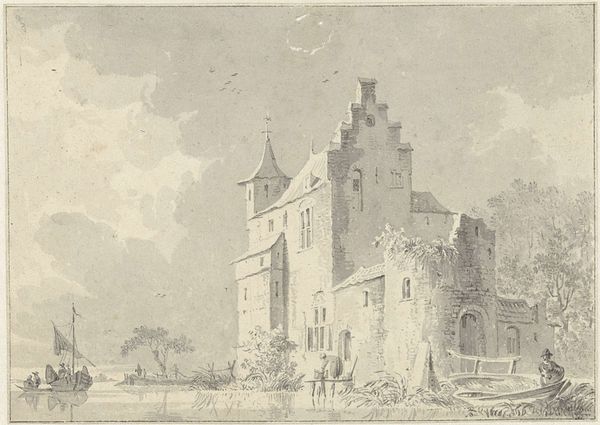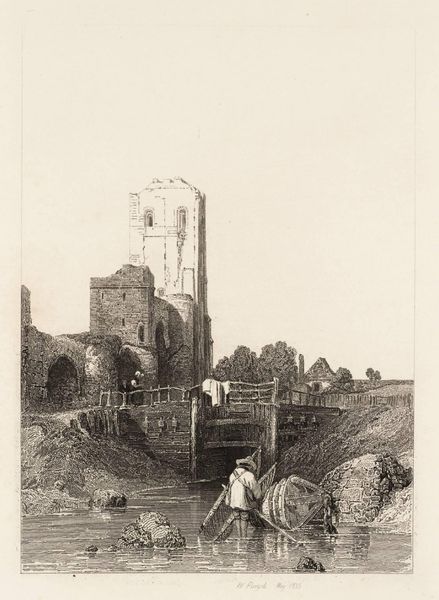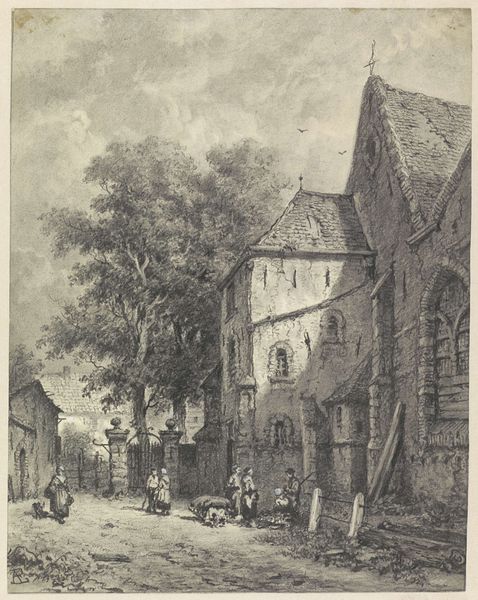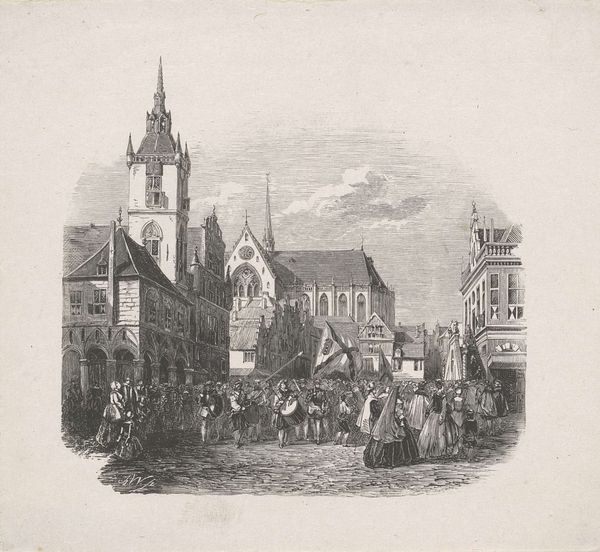
print, engraving
# print
#
old engraving style
#
cityscape
#
history-painting
#
engraving
Dimensions: height 89 mm, width 126 mm
Copyright: Rijks Museum: Open Domain
Curator: This is "Soldaten bij verdedigingswerken," or "Soldiers at Defenses," an engraving by Willem Frederik Wehmeyer dating from 1838 to 1854. Editor: My initial impression is of a somewhat bleak but orderly scene, reminiscent of old-style newspaper etchings. It really emphasizes a feeling of preparedness, although it's hard to see if a true conflict is in play. Curator: Indeed. Considering it's an engraving, we might look at the socio-political context in which prints, particularly engravings, were produced and circulated. What function did images like this one serve in public life? Editor: Well, the technique itself—engraving—suggests a process geared toward reproducibility. So, prints like this could easily be circulated, embedding into the culture a strong, arguably nationalistic, sense of duty and perhaps an idealization of the military life. Curator: Exactly. We can see this in the precise linework used to delineate each soldier and even the bricks of the defense work. This isn't just an image, but a crafted object meant for a wide audience and, potentially, a certain type of consumption, especially if the price point was within reach of many people. Editor: And how would people engage with art like this? Looking at the work critically requires us to consider the original owners of prints and how it was regarded among average members of the population who were seeing this depiction of military personnel defending their city or territory. How did this contribute to, or reflect, public sentiment at the time? Curator: Good point! It could even be used for educational purposes, showing a very ordered representation of civic duty and encouraging societal involvement in military endeavors, particularly considering the limited color palettes available at the time. Editor: Precisely. Analyzing art history from an access and materials perspective allows us to appreciate both its original utility and current impact, considering everything from print workshops to consumption behaviors of collectors today. Curator: Agreed. Through its careful craftsmanship and attention to detail, Wehmeyer's engraving becomes a time capsule, reminding us of the cultural values and power structures in the society that first received it.
Comments
No comments
Be the first to comment and join the conversation on the ultimate creative platform.

